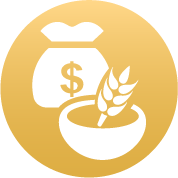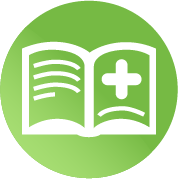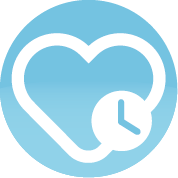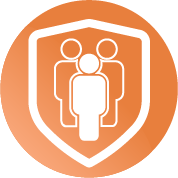Our Approach
Egmont supports a portfolio of local grassroots organisations. We believe this approach is cost-effective and enables us to deliver powerful results for children and families affected by AIDS.
Our rigorous partner identification, assessment and selection system and grant structure limits the risk to our investments in Partners.
Our portfolio model allows Egmont to identify effective programmes, work with our Partners to refine them and then propagate these initiatives across the portfolio through our peer learning initiatives, achieving an even greater impact.
Selection
Potential partner organisations are identified through our network of contacts across our six countries and through an online facility. Face-to-face meetings and project site visits from Egmont Trustees, staff and representatives form a crucial part of this process.
Assessment
Selected organisations are invited to submit project proposals outlining how they would address the issues and needs of their community. Grants are awarded to organisations that can demonstrate rigour and positive results.
Implementation
Partners commence project activities and submit regular reports on progress against objectives. Egmont’s Programme Team provides regular feedback, highlighting improvements and commending successes.
Evaluation
Partners are then graded on their performance, reporting standards and financial compliance. At the end of their project cycle, these scores determine whether partners will be invited to submit a new project proposal.
Promoting Local Solutions
Every community, family and child is affected by the HIV & AIDS epidemic in many different ways, each unique to their local context. This is why the most effective responses – as demonstrated by Egmont’s Partners – address a range of issues. Egmont recognises our Partners’ knowledge and expertise, and does not impose specific approaches or methodologies.
Whilst each of our Partners has their own distinctive approach, many of the projects Egmont supports overlap in terms of their focus. Our reporting structure enables us to build a picture of how children and families are being helped across these impact areas.
Click the icons below to learn more about how our Partners help vulnerable children affected by HIV & AIDS.
Improving Livelihoods
The social safety net in Africa is the extended family. The effect of losing a parent or caregiver to AIDS ripples through family networks. Already struggling households must provide for those orphaned by AIDS, while caring for their own children. The widespread impact of the epidemic has stretched many families to breaking point.
Our partners use their local knowledge and expertise to help families better provide for themselves, lifting them out of poverty and protecting them in the longer term.
The impact areas below show how they achieve this.
Improved Nutrition
9,097 people helped in 2022
Improving nutrition has a cascade effect. Drugs and medical treatment become more effective. Children attend school more often and perform better. Families have the energy to farm and work.
Increased Incomes
11,114 people helped in 2022
Providing people with the skills, resources and training to gain employment or start their own income generating activities enables them to start providing for themselves and their families.
Education
The increased burden on families to provide and care for the millions of AIDS orphans in the region means many are unable to afford the cost of schooling for their children. While primary education is ostensibly free the cost of school fees, uniforms and other school essentials leaves education beyond reach for many children across sub-Saharan Africa.
Our Partners use their connections to their communities to identify those most in need and develop local solutions that increase school attendance and academic attainment.
The impact area below shows how they achieve this.
Access to Education
6,136 PEOPLE HELPED IN 2022
Education leads to long-term, sustainable change. Children and adults who receive formal schooling or training are more likely to become self-reliant. Our Partners work with local government, community and private schools, and other informal education providers ensuring that poverty is not a barrier to entry.
Healthier Futures
While awareness of HIV & AIDS is almost universal, misconceptions and myths surround the disease. Providing people with the knowledge and information to protect themselves and prevent future infections is vital. Ending the year-on-year increase in the total number infected with HIV across the region entails working with communities to change behaviours that lead to infection; ensuring that those who are newly infected can access testing; and increasing the numbers enrolled on antiretroviral treatment to reduce their infectivity and enable them to live long and healthy lives.
Our partners use their close links with local service providers, agencies and existing initiatives to increase access to medical facilities for hard-to-reach communities and demographics and drive demand for their services ensuring that all generations affected by the epidemic can look forward to a healthier future.
The impact areas below show how they achieve this.
Access to Treatment
11,063 PEOPLE HELPED IN 2022
Accessible, affordable treatment leads to healthier, longer lives for those infected. Helping people adhere to ARV (antiretroviral) regimens ensures low infection rates and better health. Increasing the number of pregnant women who can access ante-natal care and be enrolled on Prevention of Mother to Child (PMTCT) treatment reduces the number of newborn babies being born HIV+. While ensuring that rurally and socially isolated groups can access appropriate treatment and care reduces the number of people dying from AIDS-related illnesses.
Testing & Counselling
14,185 PEOPLE HELPED IN 2022
An HIV test is the first step an individual can take towards reducing the impact of HIV & AIDS. People with positive results are able to access treatment and reduce the likelihood that they will pass on their infection. While, people who test negative often display a change in behaviour and take steps to reduce their chances of infection.
HIV & AIDS Education
58,045 PEOPLE HELPED IN 2022
Combatting existing beliefs and traditions that promote the spread of the disease while encouraging health-seeking behaviours is vital in preventing future infections. Education on how HIV & AIDS is contracted, how to seek treatment, manage the disease and countering discrimination and stigma is as important in halting its spread as medical interventions.
Safer Communities
The most vulnerable in society continue to be the most impacted by the HIV & AIDS epidemic. Neglect, child labour, early marriage and sexual exploitation increase children’s vulnerability to infection. Gender-based violence and extreme poverty leave women especially at risk of contracting HIV.
Our partners use culturally sensitive and community-linked initiatives to identify those in need, establish community structures that protect women and children, and combat adverse traditions and beliefs that increase their vulnerability.
The impact areas below show how they achieve this.
Preventing Violence Against Women
27,200 PEOPLE HELPED IN 2022
Educating communities on the rights of children and pursuing legal action against perpetrators of child abuse helps children to flourish and reduces their risk of contracting HIV.
Preventing Child Abuse
13,953 PEOPLE HELPED IN 2022
Reducing the impact of violence, through a combination of education, group therapy and increased access to justice or legal advice, results in fairer, safer communities for women and young girls.










